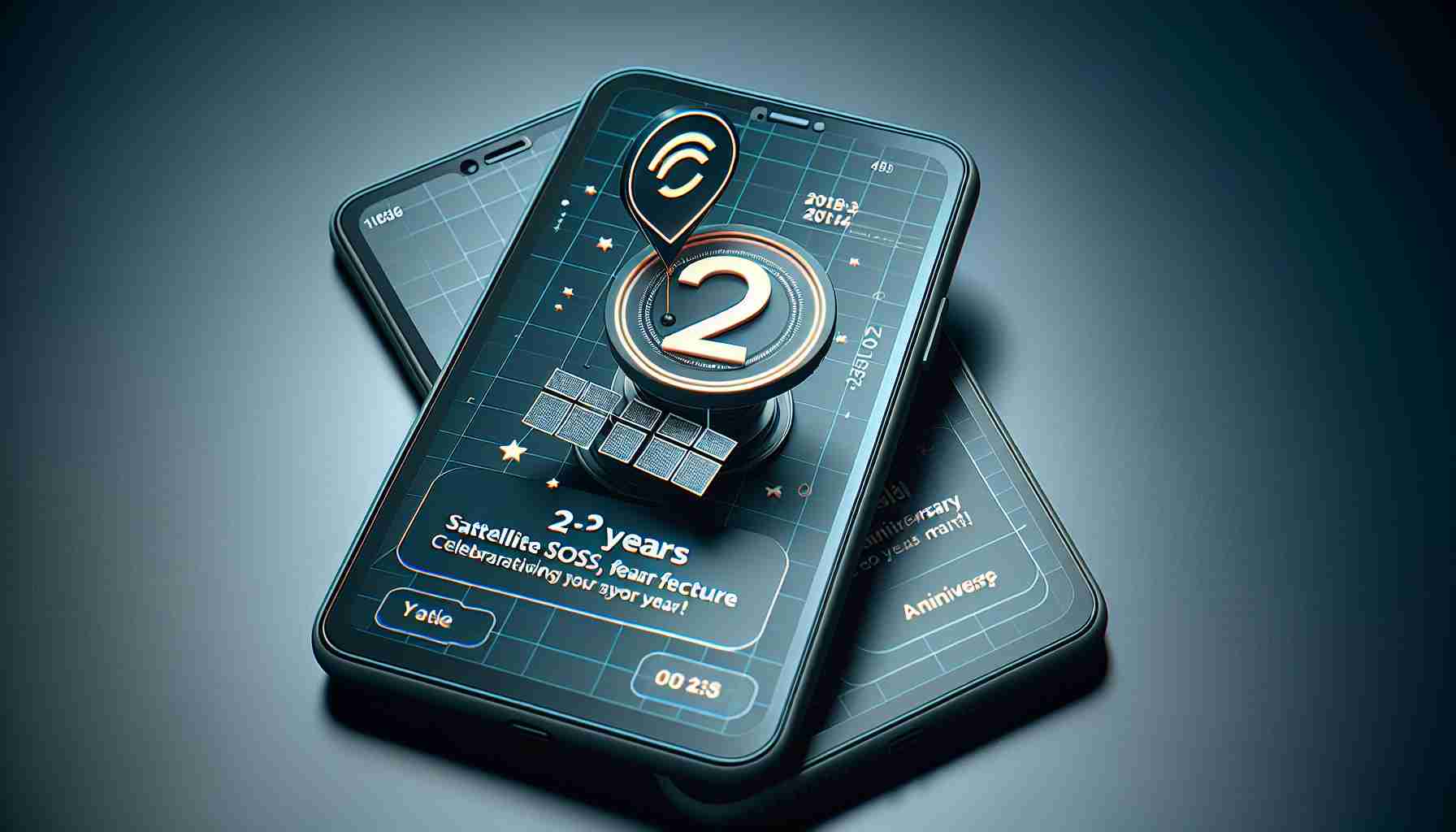
Two years ago, Apple introduced a groundbreaking safety feature in the iPhone 14 called Emergency SOS via satellite. This innovation allows users to connect with emergency services even in remote areas without cellular coverage, provided there is a clear view of the sky. Initially launched in the United States and Canada, Apple offered this service complimentary for the first two years to encourage widespread adoption among iPhone owners.
However, competition in the satellite emergency communication space is emerging. While Qualcomm has been making efforts to introduce its own system, progress has been slow compared to Apple’s successful implementation. The partnership between Apple and Globalstar, a satellite communications company, has played a pivotal role in the effectiveness of this feature. Recently, Apple renewed its collaboration with Globalstar, committing a substantial investment of $1.1 billion to enhance capacity for future iPhones. SpaceX is also reportedly collaborating with Apple to bolster their satellite infrastructure.
The efficacy of Emergency SOS via satellite has been highlighted by numerous rescues. For instance, it was crucial in locating a man whose car plummeted over 400 feet in California, enabling quick action from rescue teams. Despite the significant advantages offered by Apple’s feature, competitors like Qualcomm are still facing challenges in establishing a fully-functioning alternative. While the future of subscription costs remains uncertain, it is anticipated that Apple will keep the feature free, seeking to balance their investments through other profitable avenues.
Revolutionary Satellite SOS Feature Marks Two-Year Anniversary on iPhone
As the two-year anniversary of Apple’s Emergency SOS via satellite feature approaches, the technology behind it continues to garner attention beyond its initial success. Launched alongside the iPhone 14, this feature provides vital communications connectivity during emergencies in areas devoid of cellular service, proving indispensable for outdoor enthusiasts and remote workers. Despite its growing popularity and critical role in various rescues, several important questions, challenges, and advancements surround this feature that consumers might find intriguing.
Key Questions and Answers
1. How does the Emergency SOS feature work?
The Emergency SOS via satellite feature utilizes Globalstar’s low Earth orbit satellites to transmit emergency messages. Users can send a text message to emergency services even when traditional cellular networks are unavailable. The service allows for basic information to be sent, enabling first responders to assess the situation more effectively.
2. Are there plans to expand coverage?
Yes, growing reports indicate that Apple intends to expand satellite SOS capabilities beyond the original regions of the U.S. and Canada. Efforts are being made to include international markets, allowing more users globally to benefit from this crucial safety tool.
3. What are potential costs associated with the service after the complimentary period?
Although Apple has not officially confirmed future pricing structures, industry speculation suggests they may adopt a subscription model for satellite services post the two-year grace period. Balancing affordability with the costs of infrastructure expansion will be key.
Challenges and Controversies
The implementation of Emergency SOS via satellite has not been without challenges. The reliability of satellite communication can be hampered by environmental factors like dense foliage, inclement weather, or geographical obstructions. Furthermore, the partnership with Globalstar, while beneficial, may come under scrutiny if service interruptions occur or if expansion does not keep pace with demand. Issues regarding privacy and data security when sending emergency messages are also potential concerns for users.
Advantages
– Life-Saving Communication: The paramount advantage is its potential to save lives by providing a reliable means of communication in emergencies when every second counts.
– Widespread Adoption: The complimentary offering for initial users spurred adoption and awareness among iPhone owners, creating a cultural embrace of new safety technology.
– Ongoing Investments: Apple’s commitment to expanding capacity suggests a sustainable approach, potentially leading to enhanced services and global reach.
Disadvantages
– Cost-Related Uncertainty: The potential transition to a subscription model raises questions about ongoing costs for users and may deter some from utilizing the feature.
– Limited Functionality: While effective for emergency responses, the current system primarily functions for SOS messages, lacking the comprehensive communication capabilities of traditional cellular networks.
– Dependence on Satellite Signals: Users in regions with significant tree cover or mountainous terrain may encounter service limitations, affecting reliability.
As Apple continues to deploy advancements in safety technology, the future of the Emergency SOS via satellite feature appears promising. The investment and partnership strategies illustrate a commitment to innovating in emergency communication—a critical need in our ever-evolving technological landscape.
For more information about Apple and its ongoing innovations, please visit Apple’s official website.



